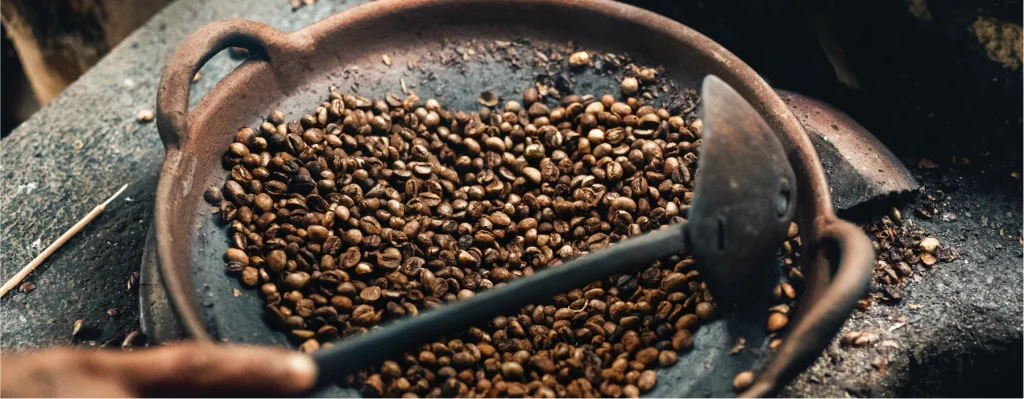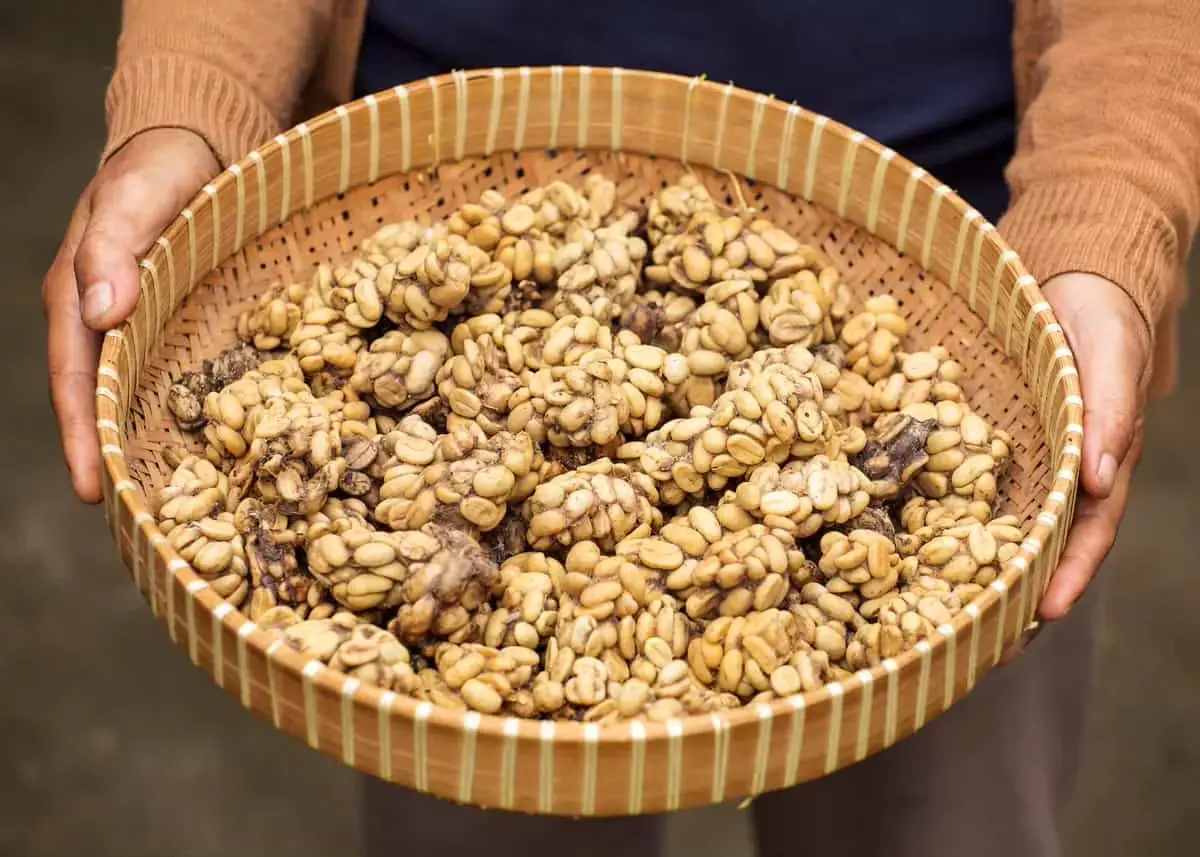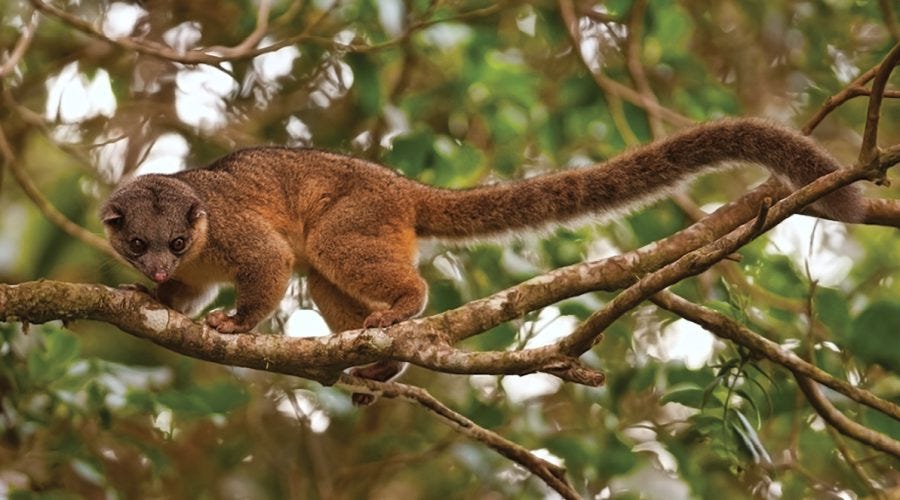Of all the many varieties that have been making waves across the exciting landscape of specialty coffee, one arises with a most adventurous and contentious story when it comes to its provenance; Kopi Luwak. The world-famous coffee – a native of the verdant jungles Southeast Asia, and also one for which people were willing to pay some serious cash. The unique aspect of Kopi Luwak is how it’s made and features the Asian palm civet, a small mammal that resides in Asia.
In the production of this very special coffee, the key player is none other than one big nosed species known as civet or locally referred to a luwak. During the night, these agile creatures roam free on the coffee plantations where they selectively feed only upon ripe and flavorful Coffee Cherries. The civet passes the cherries through its digestive tract, which creates enzymes and acids in an animal’s stomach that removes proteins from coffee beans. The result is a flavor profile that you can not find in ANY other coffee out there.
A process performed naturally for hundreds of years by local farmers that has sparked the interest in coffee lovers around the world. Its production is bizarre (coffee from civet poo anyone), unique, and one of the quirks that have made Kopi Luwak so interesting to connoisseurs. Its scarcity, exotic front and 35 dollars/ cup price point made it the biggest cash cow in a long time for this coffee speculator.
Kopi luwak is the Production Process
Contents
- 1 Kopi luwak is the Production Process
- 2 The Origins of Kopi Luwak
- 3 Kopi Luwak Problems Trend of Kopi Luwak
- 4 The Taste and Smell of Kopi Luwak
- 5 Qualities of Kopi Luwak Where to Buy and How to Brew it
- 6 The Cost of Kopi Luwak
- 7 Other Coffee Beans similar to Kopi Luwak
- 8 Journeying Through the World of Kopi Luwak
- 9 Author
Making Kopi Luwak is an intensive process, as it requires experienced farmers who know how to breed and take care of the civet including work well with their habitats behaviors. It starts out with the civets (small, nocturnal mammals called Asian palm civets) that roam at night through the Indonesian coffee plantations and eat only ripest, most delectable cherries of Kopi Luwak. The cherries are then defecated and the remainder is collected by farmers who careful extract the coffee “berries”, as these partially digested coffee beans are called.
The beans are gathered together after which they clean thoroughly to ensure no impurities or leftover civet waste. After the beans are cleaned, they are dried in the sunlight for a few days to one week depending on whether conditions. Drying is the final and important process that removes all extra moisture from coffee beans giving place to develop unique flavors of Kopi Luwak.
Roasted beans, are delicious and have a deeper flavour as the roasting releases optimal coffee flavours. The beans are closely monitored so they do not over-roast as to lose the subtle earthy and nuanced flavors known from Kopi Luwak Coffee. These roasted beans are then ground into fine powder, to be brewed and enjoyed by coffee lovers globally.
The Origins of Kopi Luwak
The production of Coffee Luwak can be traced back to the colonisation history in Indonesia, which has a process ground on civet excrement first reported. Dutch colonialism in the 17th and 18th centuries didn’t allow local farmers to drink coffee which fell afoul of their mandated exportation rules that Forbidden colonists from the fruits of their labor by shipping all beans back to Netherlands. In reaction, they had the farmers gather some of this floated coffee from Asian palm civets feces as eat them outwardly could break down just a portion.
The great thing about this is that the farmers got to taste their own coffee, while a one of-a-kind and very tasty brew was born. The civet’s process of digestion seeped into the proteins and sugars in the beans which gave it a coffee with very smooth feel being velvet-like, complex nutty taste.
Kopi Luwak production gradually spread throughout the islands of Indonesia, and each region developed their own formulae using local methods available. The coffee was a pride and cultural heritage for the community, as they realized just how special this brew really is. The higher domestic and international demand for Kopi Luwak necessitated the need to make its production more organized, which brought along some form of commercialization in processes involved with producing what is now a globally celebrated coffee.
Kopi Luwak Problems Trend of Kopi Luwak
There is also some controversy and misgivings about kopi luwak despite its premium status. Animal welfare groups and ethical consumers have put in mass production methods, including the caging-in some instances mistreatment-of Asian palm civets under a microscope.
More often than not the civets are kept in small, filthy cages where they do not have access to their natural environment or foraging behaviors. The treatment of such animals (or slaves) led to a great deal suffering and many deaths, which struck the nerves with animal welfare organisations who started campaigns against Kopi Luwak.It brought awareness at what ethical cost came this fascinating Kopi Luwak.
Moreover, the rarity of real Kopi Luwak coffee has spawned many imitations and adulterated goods on the market. Coffee beans may be cheap substitutes or artificial civet compost given consumers vulture soul crap-producing uncivil vermin. This not only discredited the real product, but it also created a lot of consumer chaos and mistrust.

The Taste and Smell of Kopi Luwak
Kopi Luwak can’t be compared to the standard production of coffees and it’s different taste is related to that. It has a smooth, velvety and highly complex taste that usually includes hints of caramel or chocolate with an earthy finish.
This porcess is thought to heavily influence the flavor and scent of the coffee. Through this long journey of the civet’s digestive system, enzymes and gastric juices break down proteins in the beans along with some of their sugars which results into a more pervasive smoothness(very low bitterness) although widely touted by marketers as one that is less sour. This, in turn, results to a more balanced and refined flavor profile that most coffee enthusiast are chasing.
Kopi Luwak is also famous for its smooth and silky mouthfeel, apart from the taste profile which it carries. The Civet, partially digests the coffee beans resulting in a less tough and more slippery-ish texture that is often referred to as “silky” or “velvet. The body, and the flavours that come with it, help to make Kopi Luwak quite a unique coffee sensation.
Qualities of Kopi Luwak Where to Buy and How to Brew it
Because Kopi Luwak is the most expensive coffee in the world and somewhat rarer to find, it can be hard finding genuine beans. The traditional form of Kopi Luwak is mainly harvested in Indonesia – the most common areas for production are islands like Java, Sumatra and Sulawesi.
Anyone looking to buy Kopi Luwak, however, must ensure they are only buying from experienced ethical suppliers. For those wishing to discover Kopi Luwak, many specialty coffee shops as well as online retailers and direct-to-farm vendors offer coffees of this kind, but it is important that the consumer make an effort in properly researching a reputable source.
For brewing a Kopi Luwak, the best is its pour-over or French press method. So that the flavors and aromas of it can come out really soft, no danger of over-extracting or burning coffee as in other modes. Using freshly roasted beans and adjusting the grind size and water temperature for a desired flavor profile are significant as well.
The Cost of Kopi Luwak
Kopi Luwak, also known as cat poop coffee due to the beans being ingested then defecated by civets before processing. is believed to be the world’s most expensive coffee with retail prices reaching from $100 or up to even over $600 a pound for some brands! This makes sense when you consider the rarity and work-intensive nature of producing such a distinctive coffee.
The natural imperative and attraction that lead to digestive systems of the palm civet that make this coffee comes at a cost: high demand for only modest supply fuels its dear price. In addition, the wdbos manner in which coffee beans are harvested and cleaned and processed add to higher cost still.
Kopi Luwak is a product harvested and sold with elite status, and the price of it reflects that–including the most morally suspect aspects. In response, these transformations have led to a rise in demand and even lead to malpractice for the sake of our profit or economic pattern instead. This led to the introduction of ethical and sustainable Kopi Luwak producers, which became a solution in response to the many misgivings that had surrounded traditional production methods.
Other Coffee Beans similar to Kopi Luwak
To combat ethical issues due to the production of Kopi Luwak, many animal-friendly and sustainable alternatives growing in popularity. This hopes to give coffee enthusiasts a more sustainable and ethical journey while providing the familiar flavor profile that they are after.
One common version of it is the Asian palm civet coffee or Kopi Luwak which has been produced in a more humanistic approach based on bioethical standards and classified as “civet-friendly”. They have allowed their farmers to let the wild civets roam at will in forests and other natural habitats, foraging coffee cherries whenever they please. The beans are then filted from the faeces, washed and roasted with or without grinding to become Kopi Luwak.
A second even more sustainable approach is creating coffee through the same fermentation and processing methods without civets. Such “civet-free” or “weasel-free” coffees are processed using novel fermentation methods, controlled temperature and humidity to mimic the unique taste of Kopi Luwak. These options might not be the same as Kopi Luwak but they can provide coffee lovers with an ethical solution that is better for our environment.
Journeying Through the World of Kopi Luwak
Kopi Luwak, with its unique and intriguing flavor and production profile, has captured the heart of countless coffee lovers around the globe. Its complex taste and interesting production, involving animals and a specific predatory process, have established it as one of the most expensive coffee varieties available.
One major issue that arose concerning the conventional methods of obtaining Kopi Luwak was the controversy and ethical discussions about the utilization of civet animal droppings. As a result, a variety of sustainable and animal-friendly coffee varieties have been introduced and continue to gain popularity. These include such types as civet-friendly or even civet-free coffee that allows coffee lovers to partly experience the original taste while also supporting acceptable and environmentally sound practices.
The story of Kopi Luwak serves as a perfect example of the coffee market’s evolution and adaptation to changing ethical values and consumer attitudes towards globalization. By traveling through the realm of these traditional varieties and their sustainable replacements, people may explore, enjoy and embrace coffee culture and flavors while supporting responsible and ethical practices in the industry.




